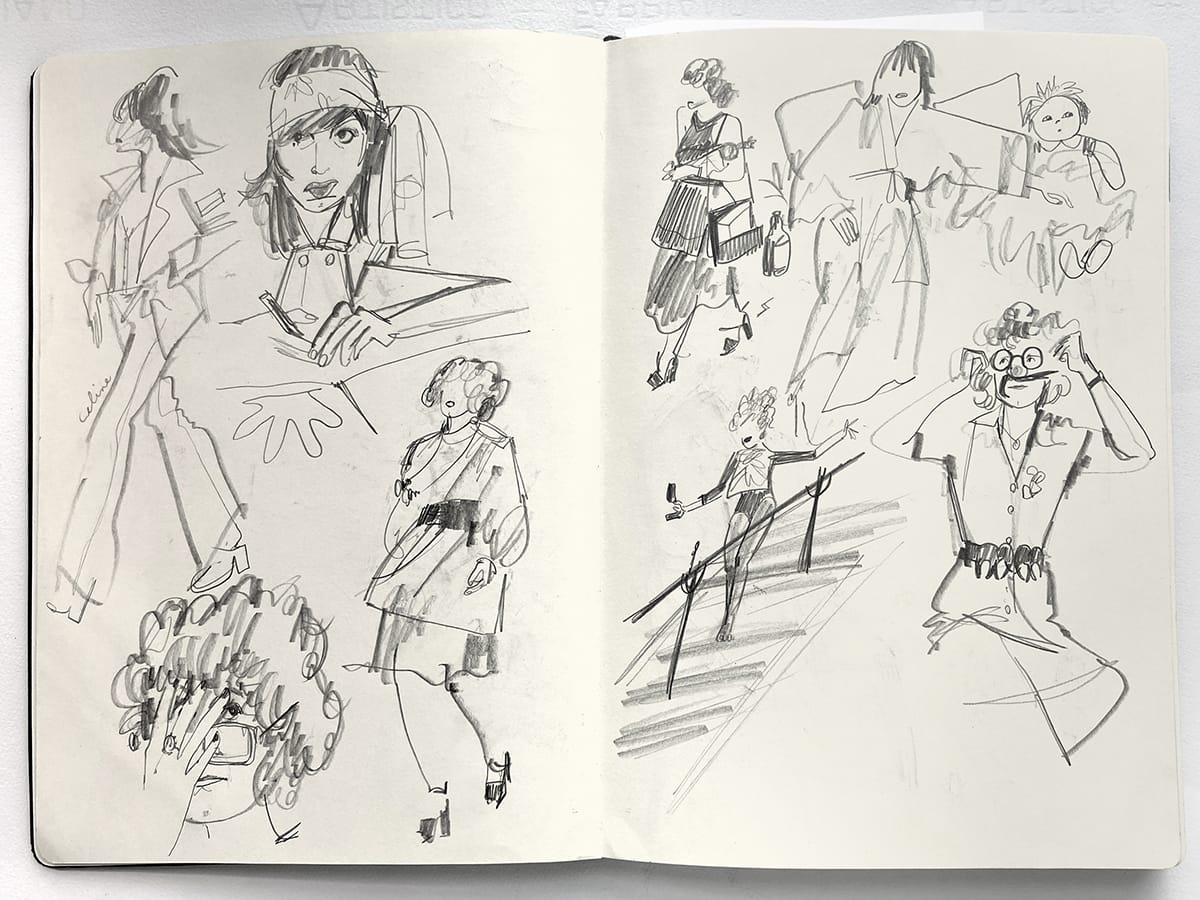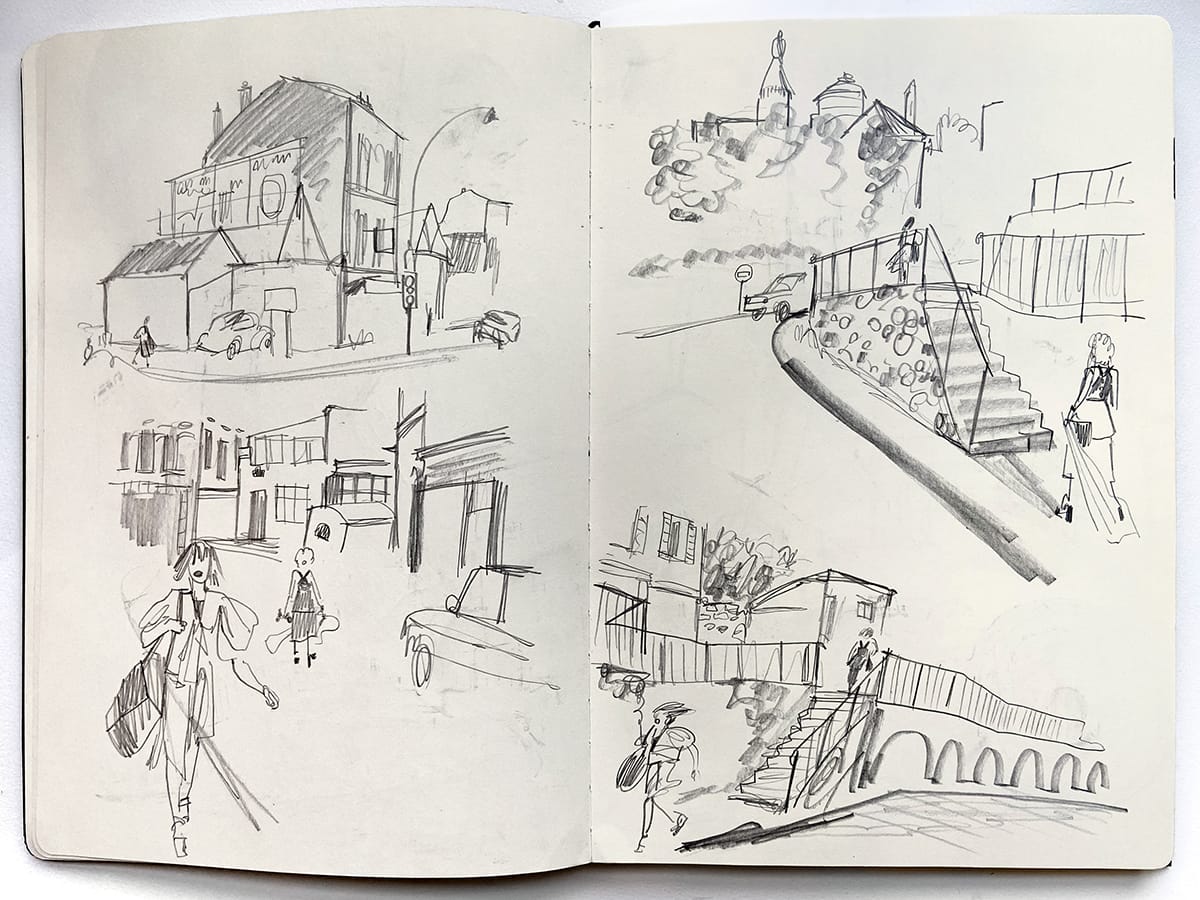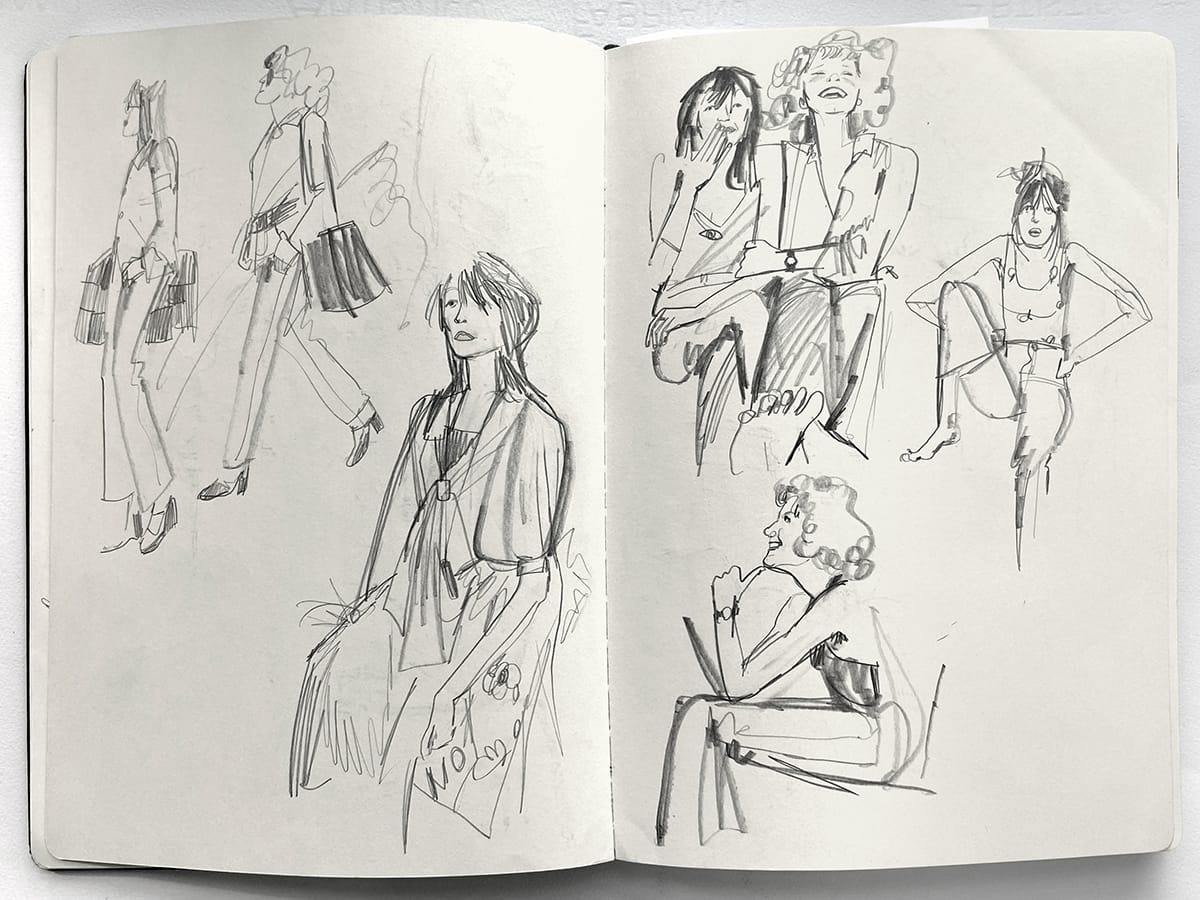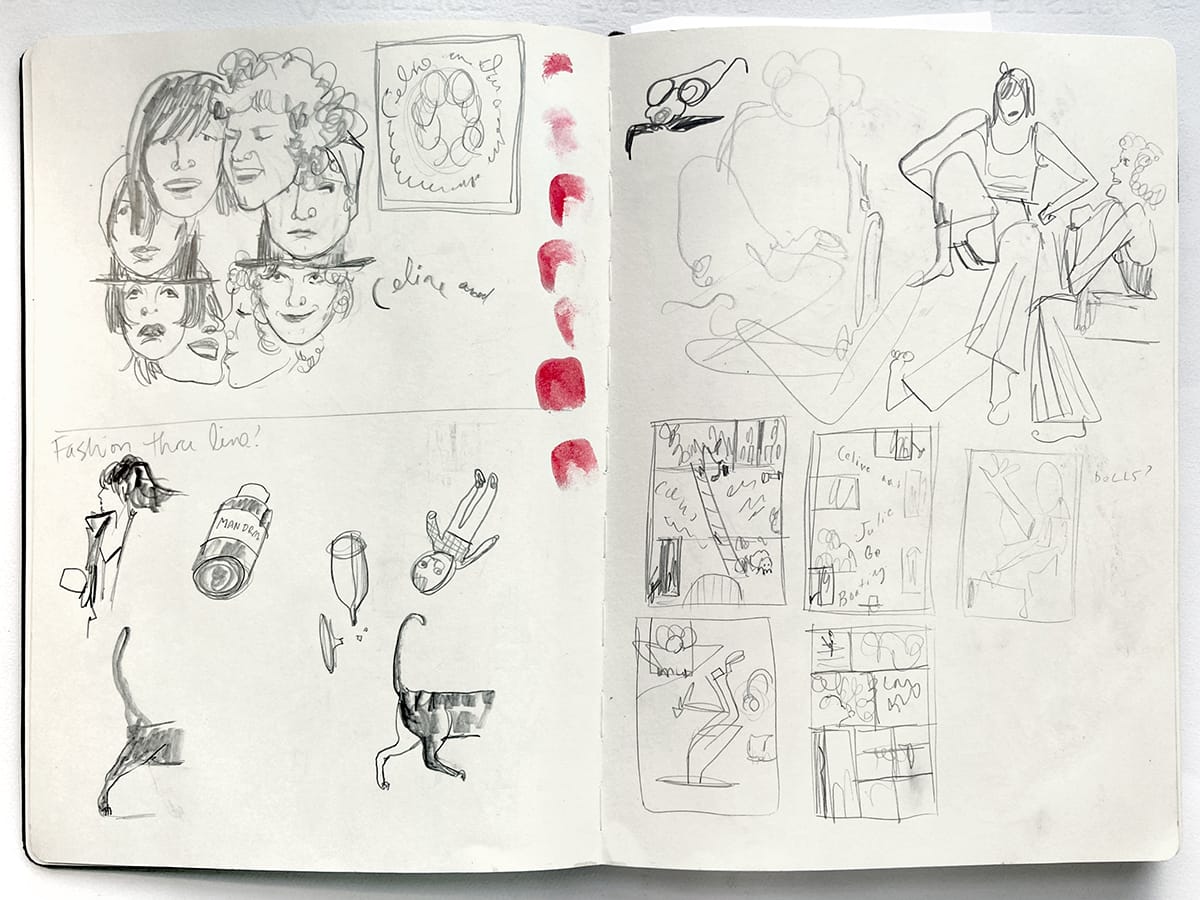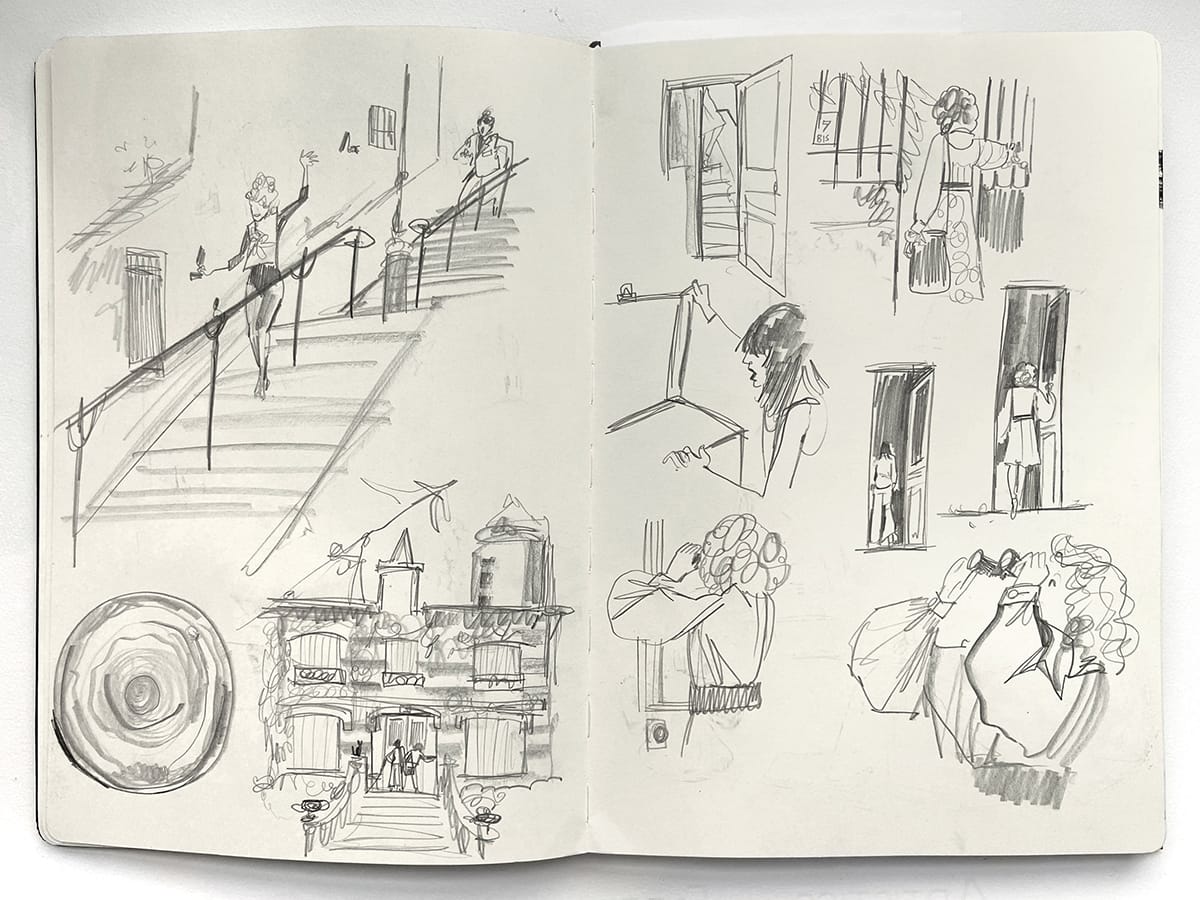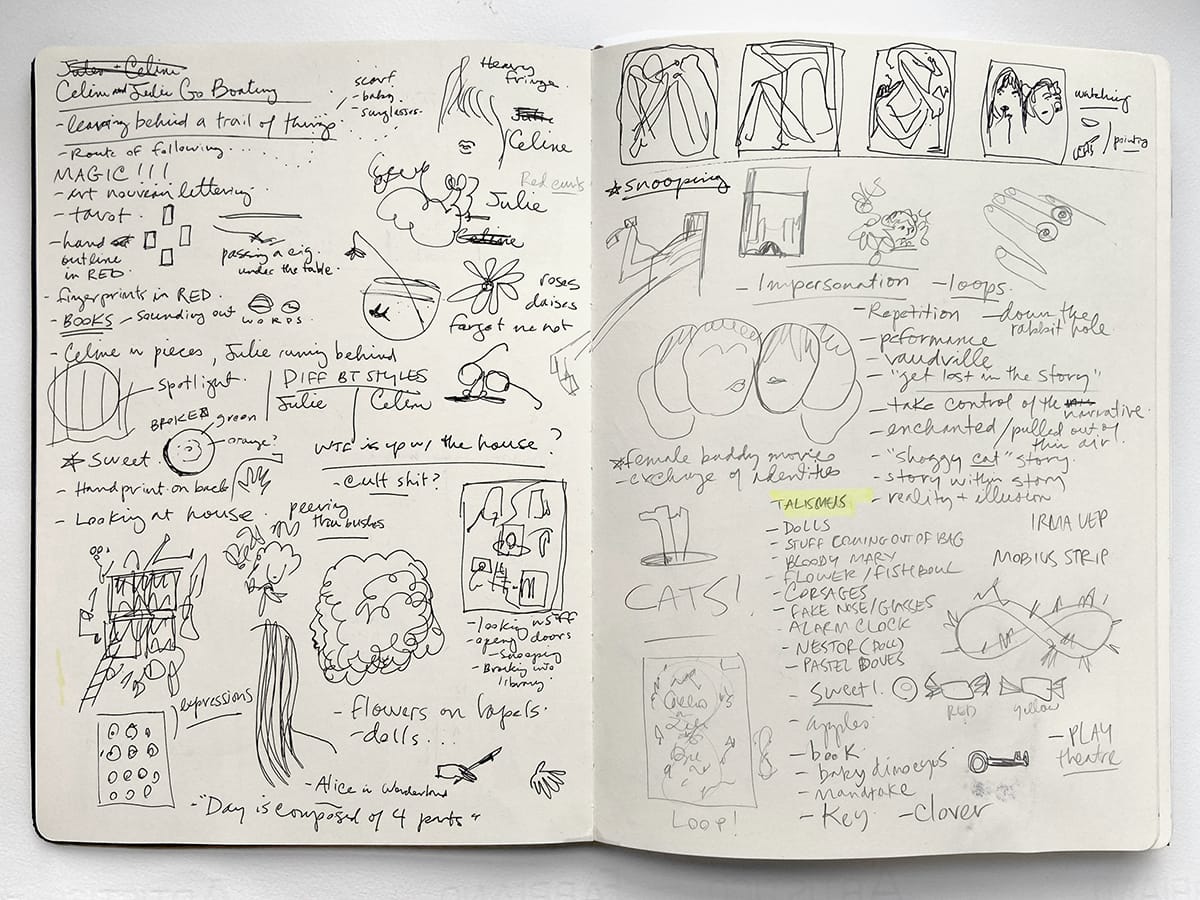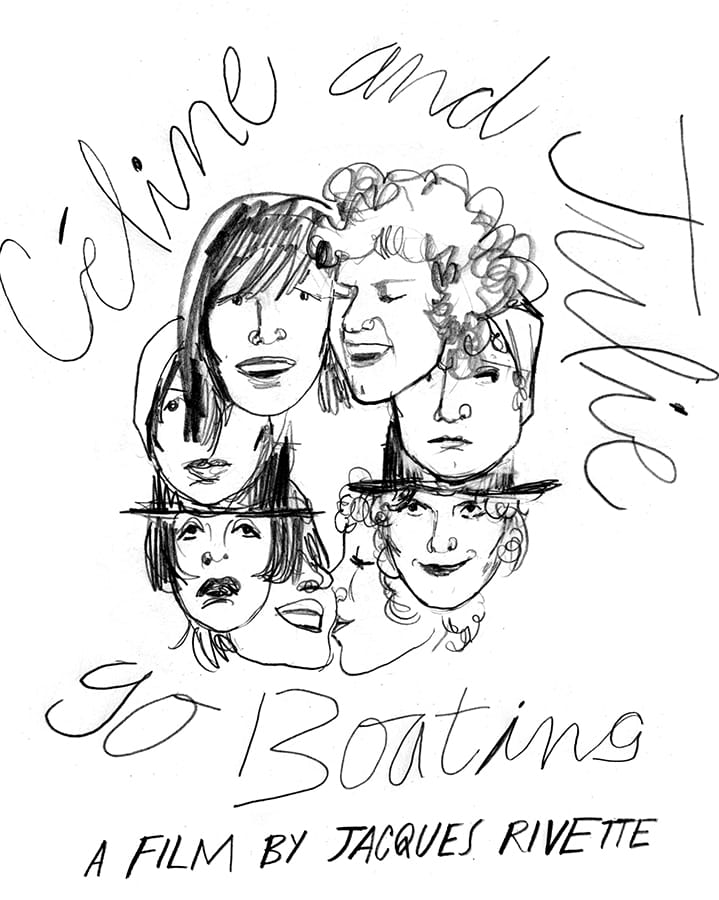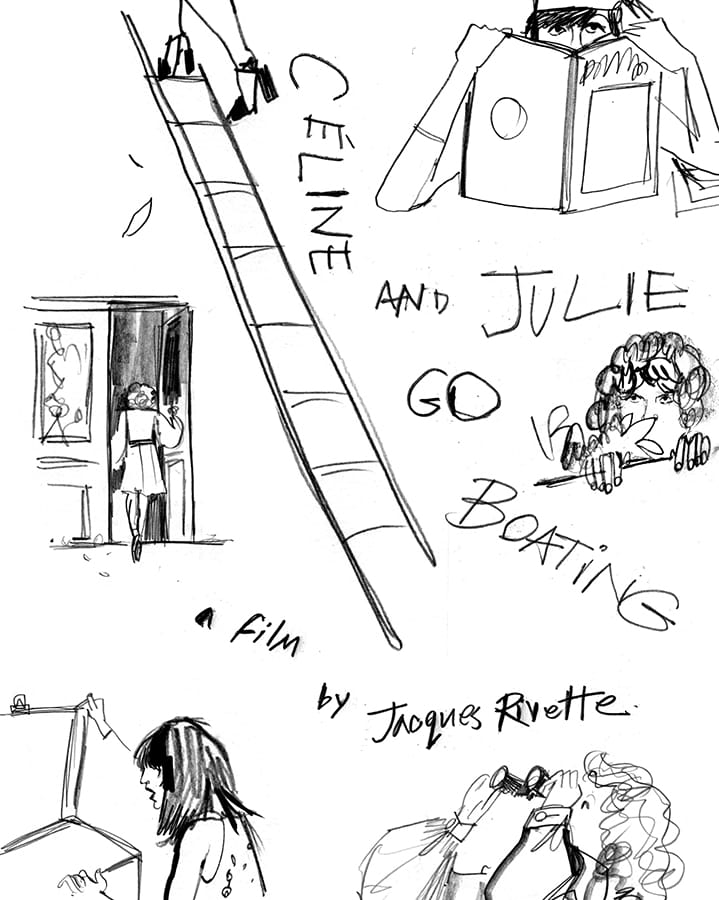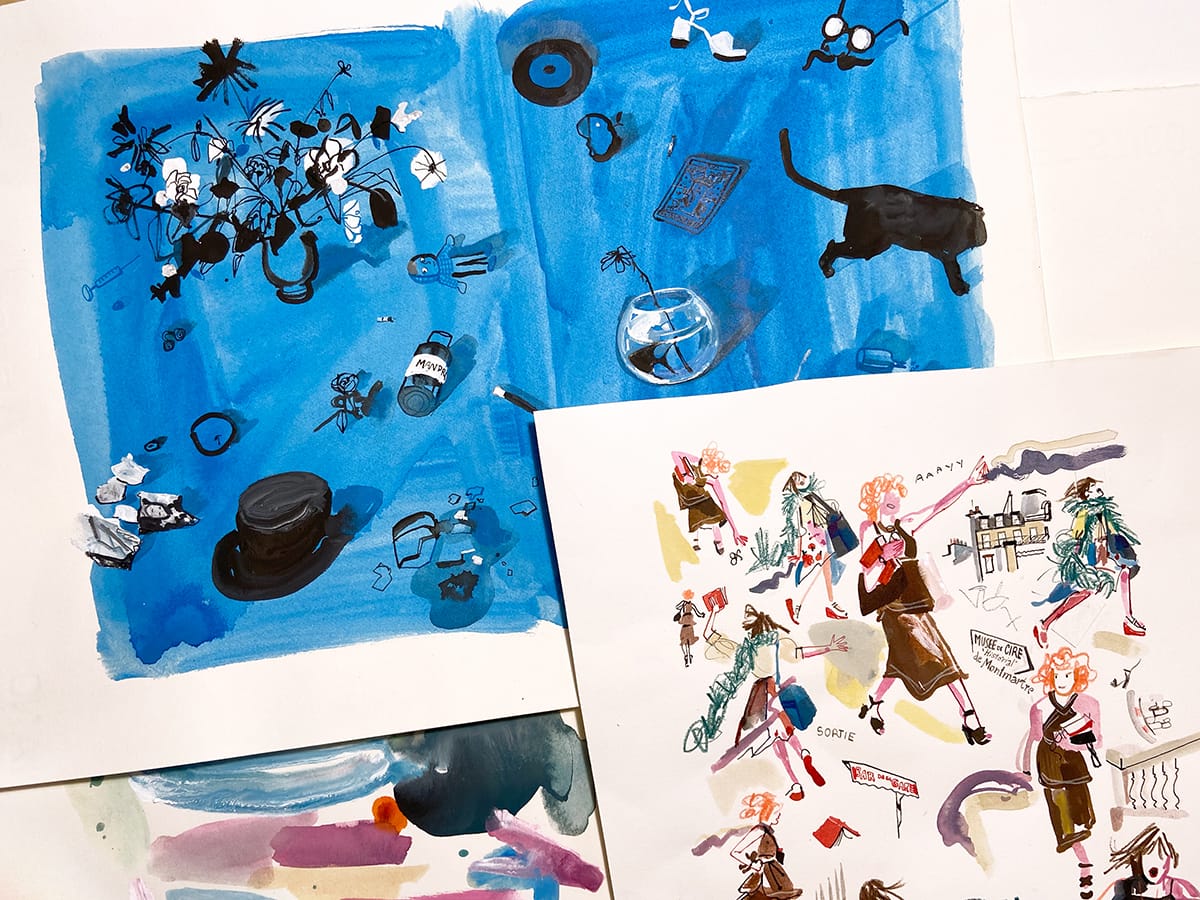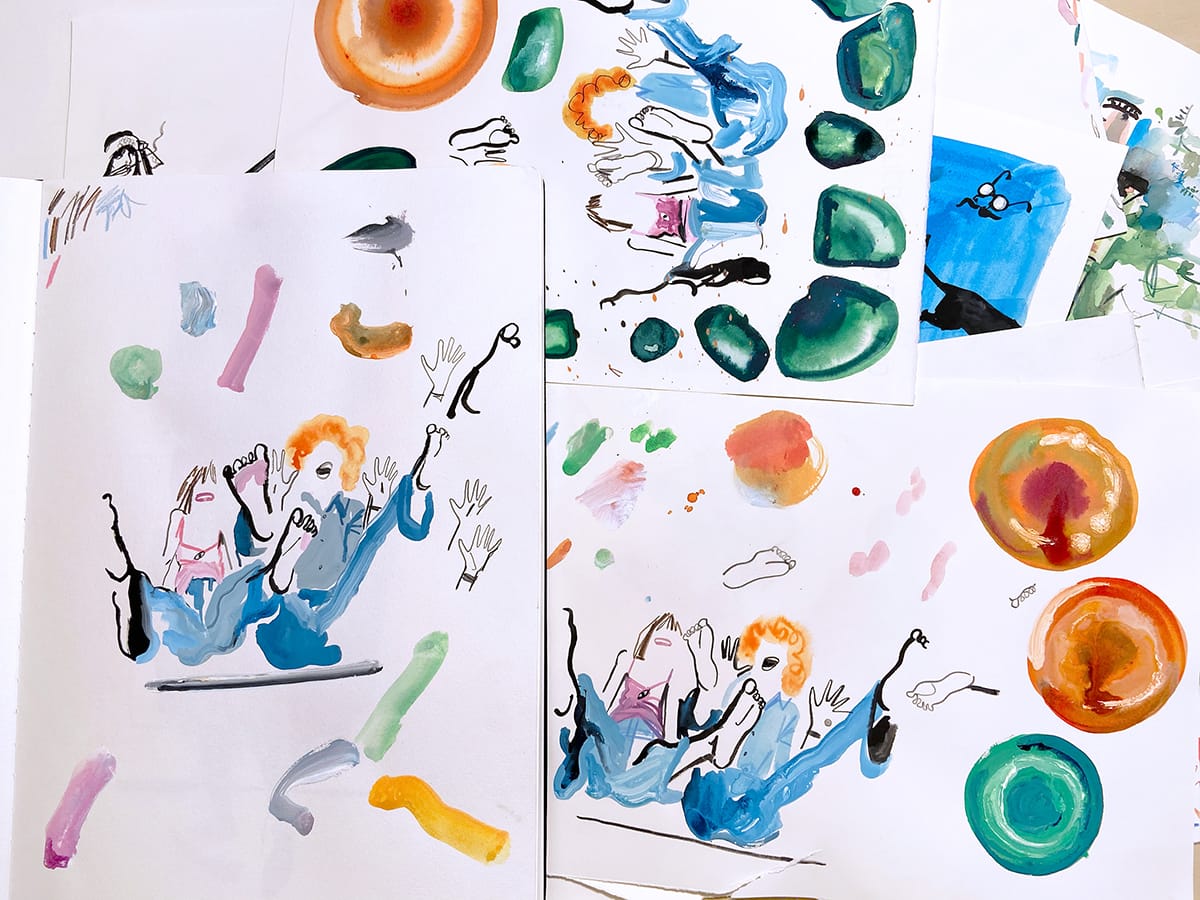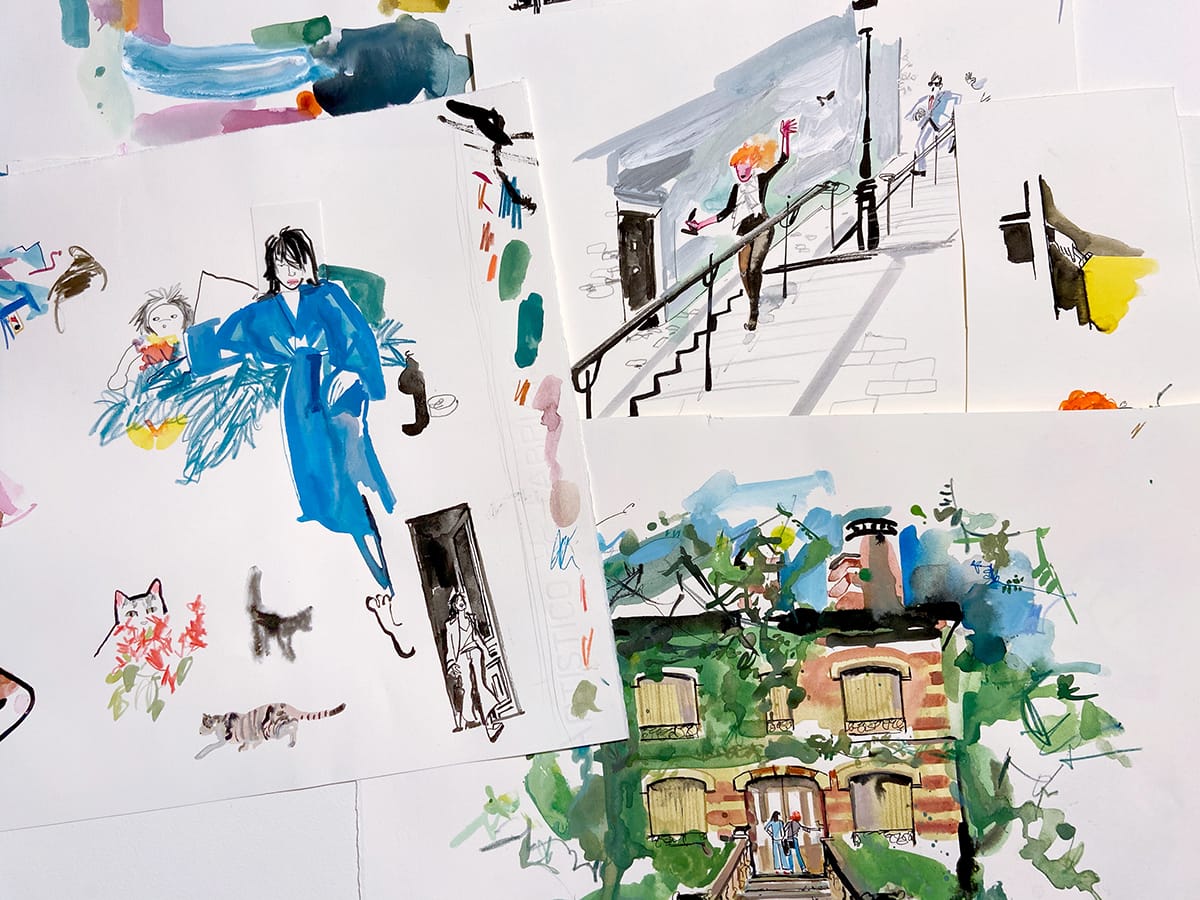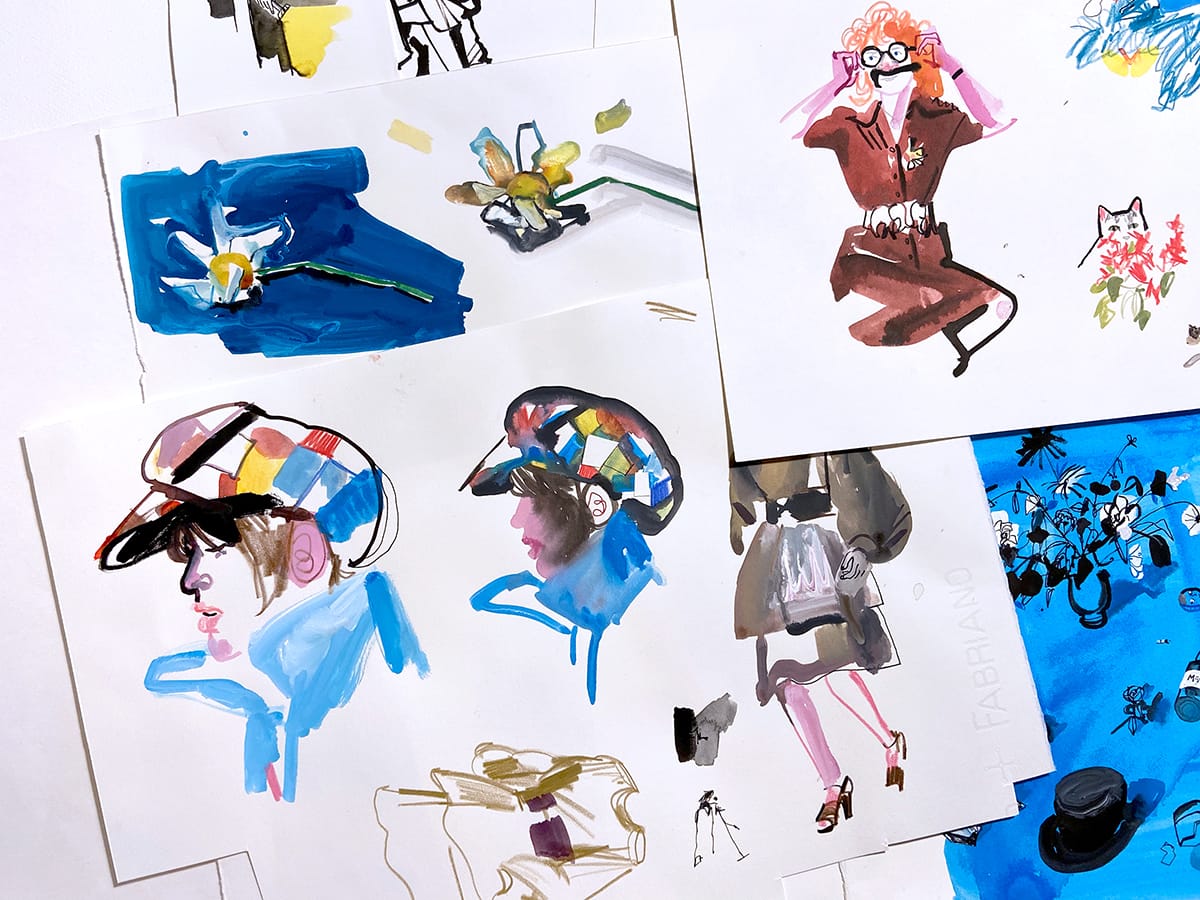The Adventure of Illustrating Céline and Julie

As skillful at capturing people’s essences as she is at conveying the textures and patterns of haute couture, Brooklyn-based artist Lauren Tamaki has brightened up the pages of such publications as New York Times and the New Yorker with her fluid, vibrant illustrating style. Below, she discusses the playful yet meticulous process by which she channeled the irrepressible enchantment of Jacques Rivette’s 1974 masterpiece Céline and Julie Go Boating into the splashily colorful images that grace the film’s brand-new Criterion edition.
Before coming to New York from Canada, I bounced from fashion design to graphic design to illustration through almost a decade of postsecondary education. Not only was it a damn good time, it prepared me for a career in illustration by expanding my visual vocabulary and offering heaps of life experience—a handy thing for any artist to have.
Even though the subject matter of my work varies, everything is based on observation and research. There are little gems of inspiration scattered everywhere, waiting to be picked up: in a magazine article, on the street, in a film, backstage at a fashion show, etc. Focusing on the details yields interesting results for me: Why did the author use that particular turn of phrase? How does an actor use her eyes to convey a secret meaning? Is that kid going to catch that pigeon?
When making visuals for an existing piece of media, the first thing to do is experience the thing. After getting a quick synopsis from Criterion art director Eric Skillman, I sat down to watch Jacques Rivette’s Céline and Julie Go Boating—which I adored, to my ecstatic delight! It was the perfect film on which to feast after months in quarantine, staring at the CVS outside my kitchen/studio window and starving for adventure. Céline and Julie are spinning their own narrative, seizing opportunities and devouring every moment. When I discovered the two leads, Juliet Berto (Céline) and Dominique Labourier (Julie), helped write the script and were pals in real life, the movie’s focus on female friendship became even more touching. Most of the men in the film are leering buffoons, are handily discarded, and in no way drive the story. Unusual, even by today’s standards. I couldn’t wait to watch it again.
I pressed play and started sketching, collecting gems to sort through later. The film is littered with magical objects, jam-packed with style, and bursting with delicious nonsense. How could I visually tackle such a story? To cope, I created “buckets”: fashion, Paris, chasing, snooping, and talismans. I ended up watching the film a few more times and collecting over a hundred screenshots, but the more I dug, the more I found.
